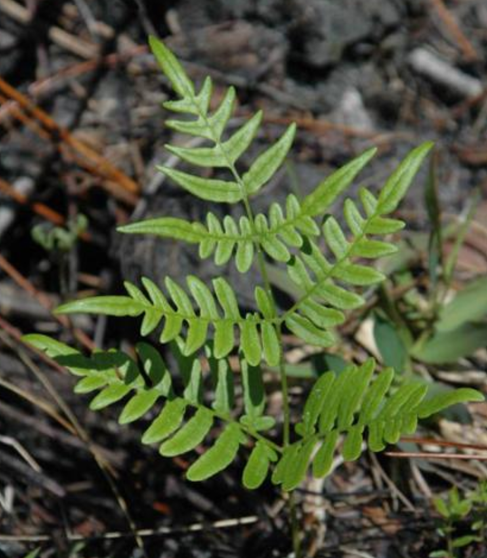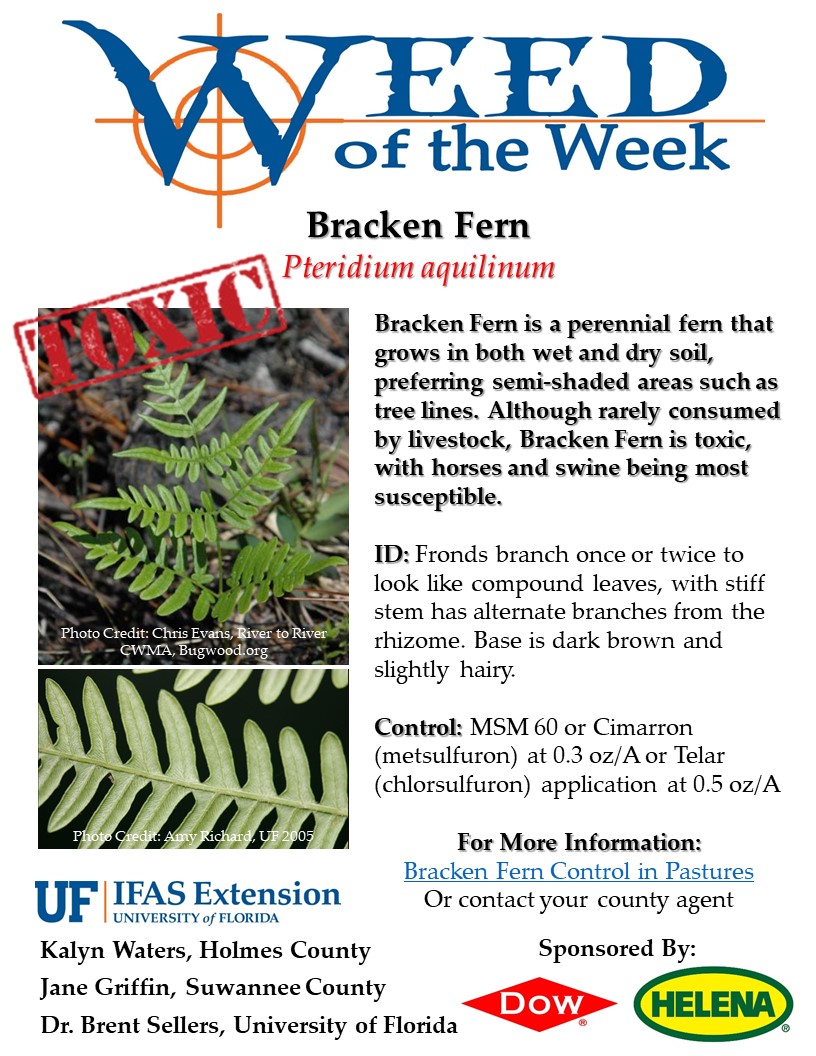Bracken Fern is a common perennial fern that is found across the United States. Its ability to grow well is both dry and moist soils, as well as along tree lines, in wooded areas, and around buildings, make it a well-adapted species. While all parts of the fern are toxic, the rhizomes are most toxic, with horses and swine being most susceptible to the toxicity and ruminants being more tolerant. Toxicity is caused by an induced B1 deficiency, however, livestock rarely consume large quantities of bracken fern, unless forage availability is limited.
For help identifying weeds and developing a control plan for your operation, please contact your county extension agent.
For more information on this topic please see the following UF/IFAS Publication: Bracken Fern Control in Pastures
Latest posts by Kalyn Waters (see all)
- Big Doe Contest Returns for 2025: A Growing Thanksgiving Tradition - November 14, 2025
- UF/IFAS Extension Panhandle Cattlemen’s College Announces Scholarship Opportunity for Florida Youth – Application Deadline September 15 - August 29, 2025
- Foot Rot Prevention and Treatment for Cattle - August 15, 2025


